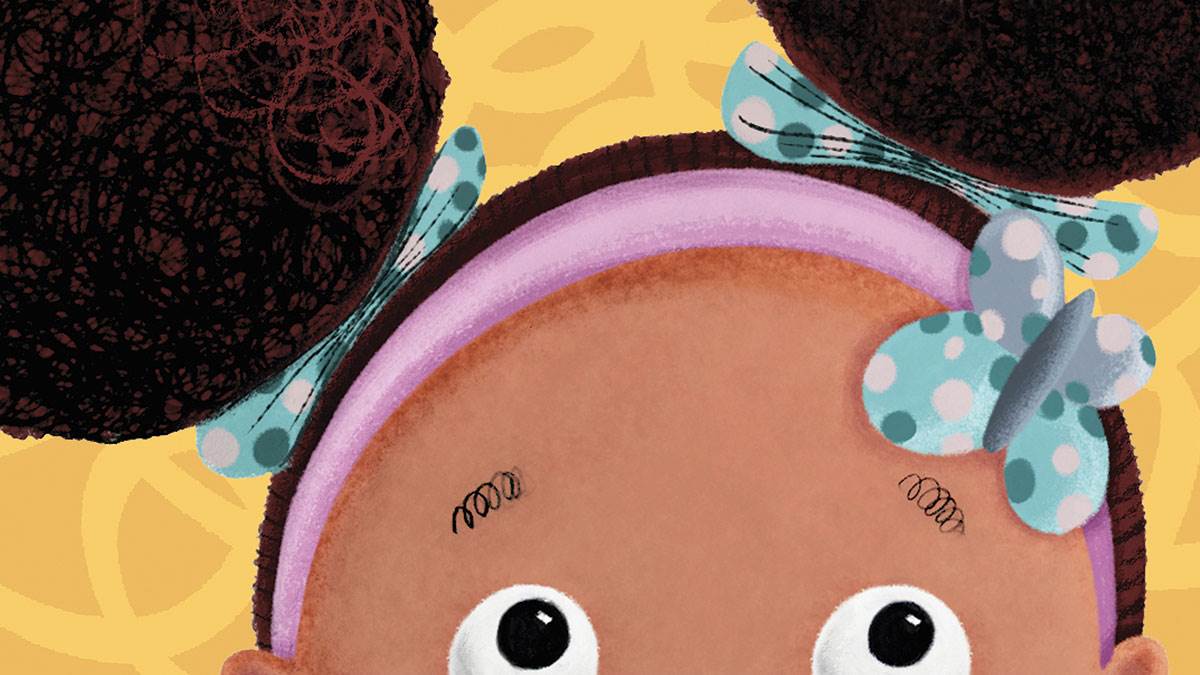Why we all need to see faces that look like us in the arts
Published on: 27 May 2019 Author: Hannah Lee
Hannah Lee's life changed forever when she entered a prize for undiscovered writers and illustrators of colour. This is why it was so important to write her story – and later share it with her nephew...

Illustration: Allen Fatimaharan; from the front cover of My Hair by Hannah Lee
My Hair started life as a poem. I wrote it as a response to the hair loss I experienced through illness when I was 14 and 15. I personified the hair I’d lost as a boyfriend I’d broken up with and was asking to come back to me.
I revisited the poem a couple of years later and reworked it as a story for my nephew.
Let's reflect the times in which we live
When my nephew was born, I was no longer the youngest in my immediate family. There was someone smaller and cuter who was experiencing things for the first time. Seeing someone in the midst of their firsts makes you think of your own. As a child, Handa’s Suprise and the Amazing Grace series of books caught my attention because they had black girls in them (ironically, they were both written by white women).
As a teenager, it was a mix of YA thrillers, British schoolgirls with parents that embarrassed them in front of their floppy haired crushes, and tales about African American girls who were navigating their way through drama, friendships, schoolwork and romantic relationships.
I read so many books with my nephew, yet I noticed early on that there was still a lack of black characters. We had to hunt for books that looked like us. Why weren’t they easily accessible? As Nina Simone once said, ‘It's an artist's duty to reflect the times in which we live.’
How is it then, that only 1 per cent of children’s books feature BAME (black and minority ethnic) main characters [CLPE study, 2018], despite the fact that the Department of Education identified 32.1 per cent of schoolchildren in the UK are from a minority/ethnic background?
Read our BookTrust Represents report on representation in children's books
Why we need things like the FAB prize
I read an early draft of My Hair to my sister and I’ll always remember her visceral reaction to it. She could see the hairstyles, ones she’d had or that had come from her fingers, and instantly said, ‘This is a book!’
‘I’m going to enter it into this thing called “The FAB Prize”,’ I told her. That was four years ago. ‘This thing’ was actually an exciting initiative by Faber & Faber to showcase stories and art by BAME authors and illustrators, and was the start of something amazing. I didn’t win what was the first ever FAB Prize, but I did come highly commended and I met loads of brilliant people.
It was whilst attempting to see how many mini cupcakes I could discreetly stuff in my mouth that Alice Swan from Faber told me she and the children’s department loved my story and wanted to publish it.
The euphoria of being recognised
There’s a euphoria that comes from reading about someone that looks like you; reading about descriptions of your skin, seeing an illustrator capture the spectrum of browns in your family, the coils in your hair, in print is wonderful. Someone has recognised you and you feel like there’s a piece of art in the world that reflects you.
I want my niece and nephew and future generations to be able to feel that. I want diverse stories to be so normalised that children expect to see books, movies, art, media with faces that look like theirs.
There are and have been black authors writing books and putting their works out into the world, and yet we weren’t seeing them. It’s not hard to see why, when you take into account factors such as lack of marketing and a perception that there’s no demand.
A lot of the onus is also largely placed on black and brown artists to fight harder to gain access to predominantly white publishing spaces, rather than publishers that actively seek new stories.
Initiatives like the FAB Prize aim to combat this problem and bring about change, and it’s my hope that many more amazing voices will be found and celebrated.
To any aspiring black or brown authors or illustrators reading this, there will ALWAYS be a place for your story.
In the words of Toni Morrison: ‘If there's a book you want to read, but it hasn't been written yet, then you must write it.’
Find a list of prizes and initiatives that might be right for you
Topics: Diversity (BAME), Features, BookTrust Represents






Add a comment